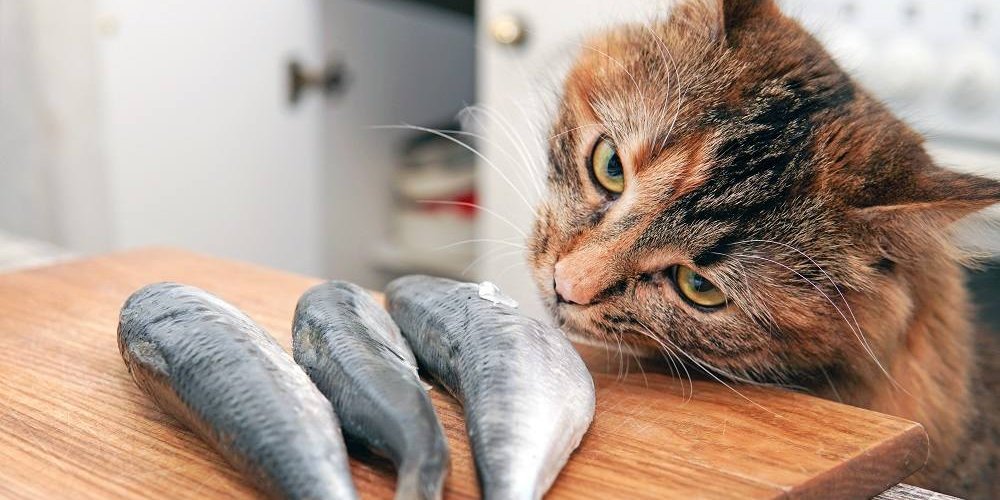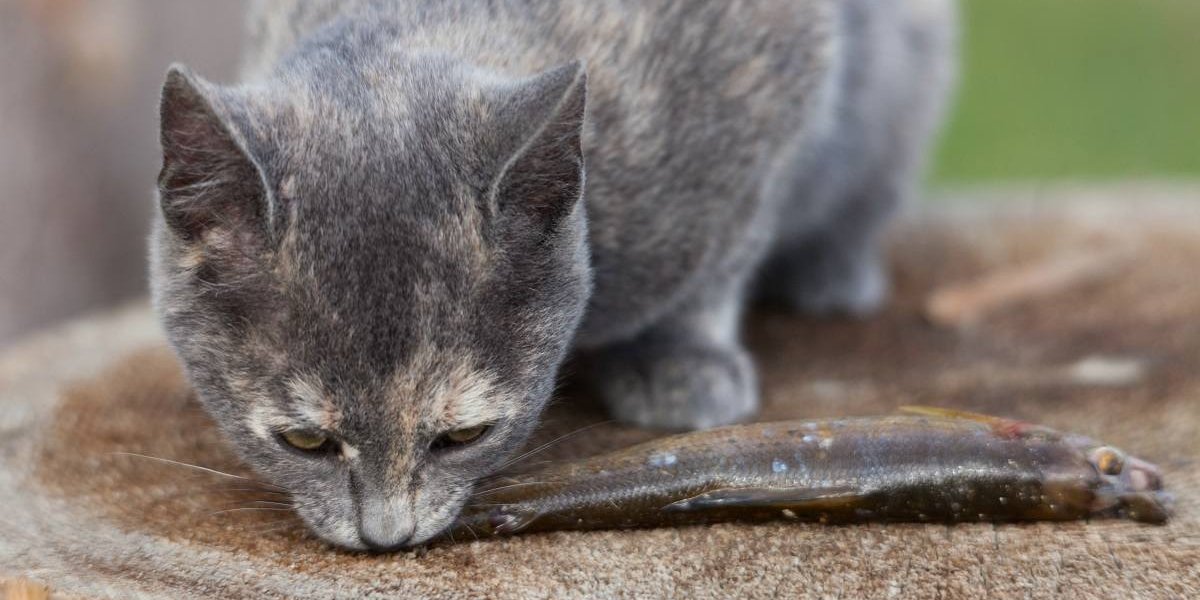
Pogodina Natalia / Shutterstock.com
Fish is often touted as a healthy dietary choice due to its lean protein, high levels of omega-3s, and plentiful vitamins and minerals. It is also commonly portrayed as a natural cat food, either as a treat or as a main dietary component. But is it good for cats?
Cooked fish is safe for cats to consume and it can be found in many commercial cat foods and treats. Cooked salmon, white fish, and oily fish are all common protein bases in commercial cat diets.
Although cats are obligate carnivores and rely heavily on animal-sourced protein, eating raw fish can lead to serious health issues. Raw meat and fish carry bacteria and parasites that can cause painful gastrointestinal upset. They contain bones that can cause damage as they pass through a cat’s system. Additionally, raw fish can also affect a cat’s ability to utilize enough of an essential B vitamin.
In this article, we’ll explore why raw fish is not good for cats and provide some cat-friendly alternatives to feed your cat instead.
Why Isn’t Raw Fish Safe for Cats?

Cats might be attracted to the scent and taste of raw fish but that doesn’t mean it is safe for them to eat. Aleksander Hunta / Shutterstock.com
If you’re confused about what makes a good cat food, Dr. Sarah Wooten, DVM, advises checking commercial cat foods for a Nutritional Adequacy Statement from AAFCO (Association of American Feed Control Officials), which sets nutritional standards for pet diets. You’ll find that fish is a common ingredient in cat foods. I feed my cats a diet that contains salmon, as it’s a great source of lean protein and omega-3 fatty acids. So why not raw fish?
Bacteria and Parasites
Uncooked fish can be contaminated with bacteria, parasites, and other organisms. Common bacteria found on raw fish include E. Coli, Listeria, and Salmonella. These can cause food poisoning, leading to an upset tummy with gastrointestinal symptoms, such as vomiting or diarrhea. Sadly, I’ve seen a few cats in my veterinary clinic who became very unwell with severe vomiting and diarrhea after eating raw fish.
Vitamin B Deficiency
Raw fish also contains thiaminase, an enzyme that destroys thiamin, a B vitamin. Thiamin is an essential vitamin for cats, and eating raw fish could leave them deficient due to the amount of thiaminase raw fish contains. A thiamin deficiency will cause neurological problems, such as seizures and even coma. It’s important to note that thiaminase enzymes are usually destroyed by cooking, so cooked fish is unlikely to cause a vitamin deficiency.
Mercury Poisoning
Certain types of large fish, such as swordfish and tuna, contain high levels of mercury, a carcinogenic and highly toxic element. Mercury poisoning in cats [1] is uncommon but can cause symptoms such as depression, blindness, incoordination, abnormal behavior, and convulsions. Mercury poisoning is possible with both raw and cooked fish if simply too much is eaten.
Common Allergen
Additionally, fish is not uncommon as a food allergen for cats. Research suggests that fish joins beef, eggs, chicken, dairy products, and lamb as some of the top foods that cause cat allergies. This will apply to both raw and cooked fish, but it might be best to avoid fish as a protein source for cats with potential dietary sensitivities.
Fish Bones
Finally, raw fish often contains bones. Fish bones are small, but can be very sharp, so they can irritate the mouth, throat, and gastrointestinal tract. Bones can also be a choking hazard, and can even cause an obstruction in the throat or intestines.
Keeping Raw Fish Away From Cats

Cats are agile and can easily jump up onto tables and countertops, so keep food well secured. EkaterinaSid / Shutterstock.com
If you’re preparing fish at home, your cat might enjoy the aroma and come looking for a taste. Take some measures to keep your pets safe from raw fish:
- Keep raw fish out of reach: Don’t leave raw fish, cutting boards, or drippings unattended on countertops or surfaces your cat can access. Cats can jump higher than you might think and they are very stealthy!
- Good hygiene: If you are preparing food using raw fish ingredients, always practice good hygiene principles. Wash your hands thoroughly, clean surfaces with disinfectant, and don’t handle your cat’s food when cooking or preparing human food.
- Don’t encourage scavenging: Some cats like to hang around during cooking time in the hopes of snagging a scrap or two—mine certainly do! Try to deter this behavior and refrain from letting your cat associate cooking human food with meal or snack time.
Fish is a good source of some essential nutrients, such as protein, omega fatty acids, and essential vitamins. Cooked fish can be a nutritious treat on top of your cat’s balanced diet. If you’re preparing fish for your cat, remove all bones, cook the fish thoroughly, and do not add any herbs, spices, or seasonings. Remember, garlic and onion are toxic for pets.
There are plenty of alternatives to fish, however. The best diets for cats are based on animal-sourced protein, include essential fatty acids, and aren’t too high in carbohydrates. Animal-sourced protein sources can be highly variable and include many alternatives to fish, such as chicken, lamb, rabbit, or beef.
-
Mercury Poisoning in Animals. MS Vet Manual.







